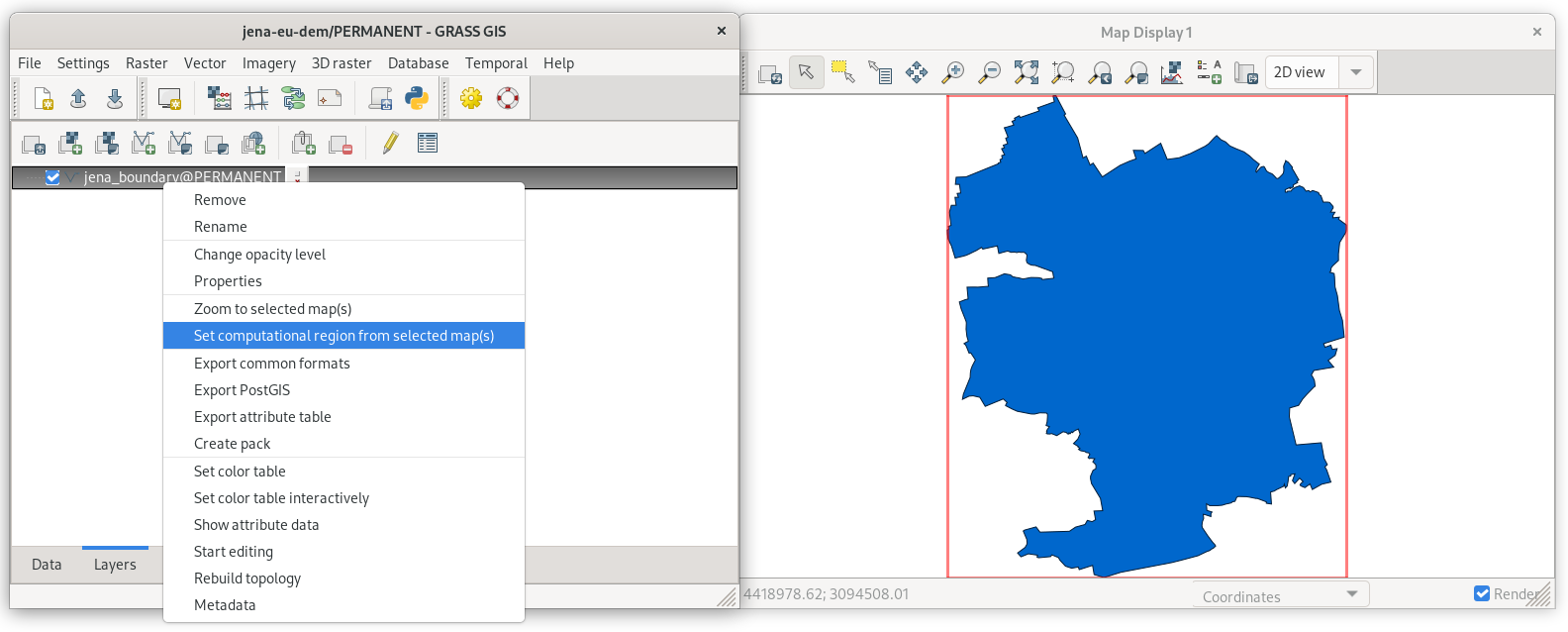
Modify table grass gis software#
Proceedings of the free and open source software for geospatial (FOSS4G 2007) conference, VictoriaĬannata M, Marzocchi R (2012) Two-dimensional dam break flooding simulation: a GIS embedded approach.
Modify table grass gis manual#
Comput Geosci 30:325–331īrunner GW (2010) HEC-RAS River Analysis System Hydraulic Reference Manual Accessed 10 June 2013Ĭannata M (2007) RiskBox: natural hazards and risks analysis within the GIS GRASS. J Hydrol 236:54–77īrovelli MA, Cannata M (2004) Digital terrain model reconstruction in urban areas from airborne laser scanning data: the method and an example for Pavia (Northern Italy). Proceedings of the VIII Forum Italiano di Scienze della Terra, Torino 4:49īates PD, De Roo APJ (2000) A simple raster-based model for floodplain inundation. An exploratory study on an hypothetical event: the Val Canaria flood. GeoInformatica Int J Adv Comput Sci Geogr Inf Syst 7(4):283–313īaruffini M, Pozzoni M, Marzocchi R (2011) Analysis of potential effects of dam break flooding using a GIS-tool for risk assessment in mountain regions. We intend to use the 1D model, GIS embedded if possible, to calculate the water surface profile along the river axis and the 2D numerical one to analyse inundation beside the river levees.Īrge L, Jeffrey SC, Halpin PN, Toma L, Vitter JS, Urban D, Wickremesinghe R (2003) Flow computation on massive grid terrains. We analyse the possibility of integrating these two approaches. In this work we present a comparison between the two models mentioned above.
Modify table grass gis license#
Both are available on the official GRASS addons website and are distributed under the terms of the GNU General Public License (GPL). Both models have been implemented in geographic resources analysis support system (GRASS)-GIS software (Neteler et al., Environ Model Softw 31:124–130, 2012 GRASS, 2013) and two new commands ( r.inund.fluv and r.damflood) have been created. The newly developed GIS module gives as output maximum intensity maps which can be directly used in a risk assessment process. The intercell flux is computed by a one-side upwind conservative scheme extended to a 2D problem (Ying et al., J hydraul eng-ASCE 10:977–98, 2004).

This module solves the conservative form of the 2D shallow water equations (SWE) using a finite volume method (FVM).

On the other hand, a second approach uses a GIS-embedded two-dimensional (2D) model in order to simulate flooded areas due to a dam break (Cannata & Marzocchi, Nat Hazards 61(3):1143–1159, 2012). A first approach (Federici & Sguerso, Bollettino SIFET 4:25–42, 2007 Marzocchi, 2009) uses a GIS module in order to simulate perifluvial flood maps, having as prerequisites (i) the conformation of the river floodplain by a high-resolution DEM and (ii) a water surface profile along the river axis calculated for a given water discharge through a generic one-dimensional (1D) hydraulic model (HEC-RAS, Basement, MIKE 11, etc.). Using GIS tools is beneficial for effective processing and accuracy assessment in comparison to traditional methods which are based on topographic maps and field surveys. LiDAR data, such as digital elevation models (DEM), makes GIS numerical models attractive methods for obtaining a flooded area automatically. However, it is not widely used for defining inundated areas. Nowadays, using Geographic Information System (GIS) technology for risk assessment analysis is very common. Its importance is considered for both managing and planning emergency activities, such as hydraulic risk reduction management, and also town planning.

The first step of a risk assessment analysis is the evaluation of flood-prone areas.


 0 kommentar(er)
0 kommentar(er)
